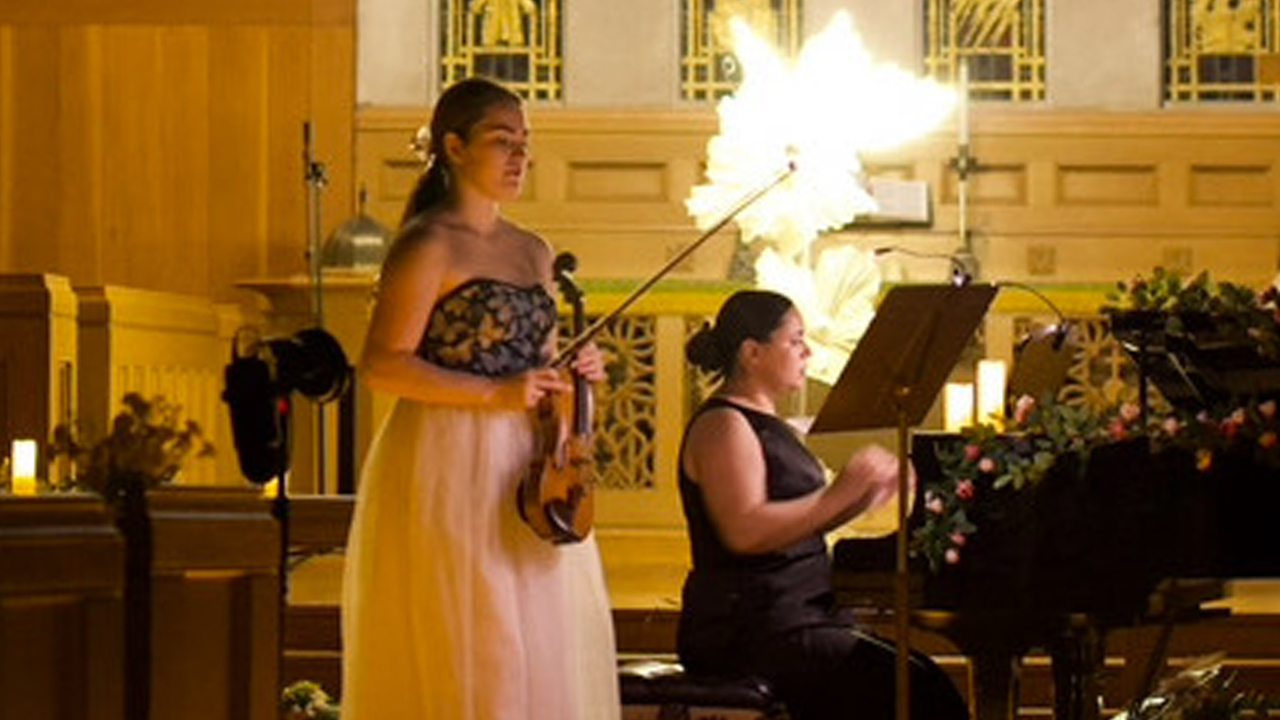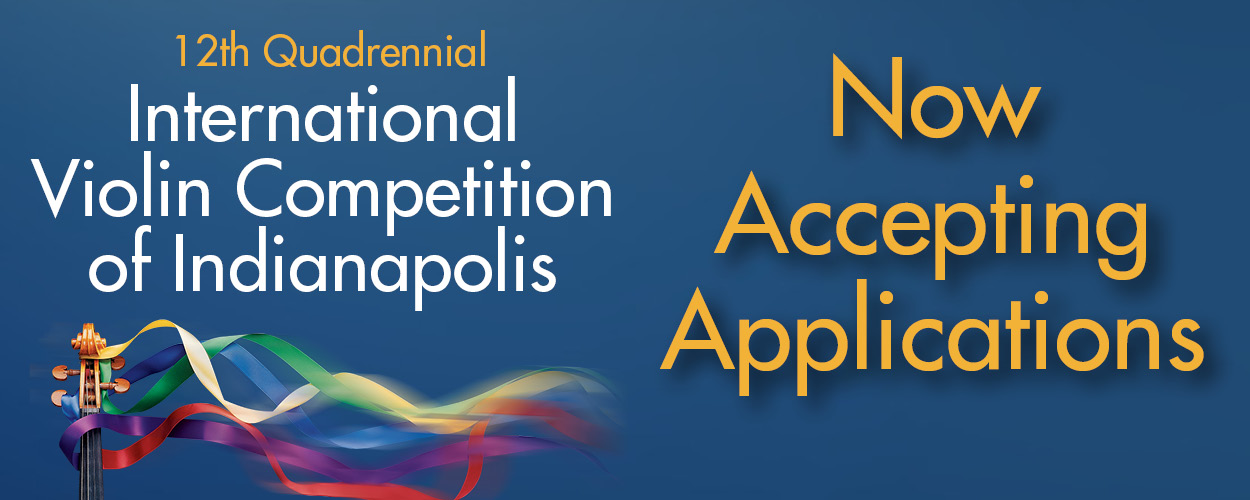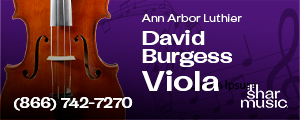How Narrative Thinking Transforms Violin Playing
In a matter of just one moment, technique stopped being the center of my art as a violinist. This moment arrived quietly, without fanfare, in a small hall during one of my Light & Bloom performances. After the final notes of John Williams’s "Across the Stars" dissolved into silence, a woman approached me with tears streaming down her face. She asked — almost whispered — if she could place her hand on mine. Her voice trembled, but her gratitude was steady. She told me she felt "lifted," "seen," "healed."
She didn’t mention intonation. She didn’t mention bow control. She didn’t mention harmonic pacing. She focused solely on what the music meant - how it had connected with her.

In that instant, I understood something that has guided my playing and teaching ever since: audiences do not remember what we play; they remember what we mean. And meaning, for a violinist, is made not of notes — but of the narrative created by those notes.
The Shift from Technique to Narrative
Like most violinists, I spent years obsessed with mechanics: how to divide the bow, how to layer vibrato into the center of a phrase, how to time a shift so it lands with elegance rather than panic. These questions are essential, of course, but they are not interpretations. They are the alphabet of interpretation.
The grammar — the emotional logic behind our choices — comes from somewhere else.
When I play now, I no longer ask: Is this articulated correctly? Instead I ask: Why does this gesture appear here? What is the psychological arc of this phrase? Where is the character unsettled, searching, confessing, resisting?
This is narrative thinking, and once a violinist begins to think this way, the entire landscape of the score changes. A slur is no longer just a matter of style, it becomes a breath. A shift becomes a confession. A harmonic suspension becomes a question hanging in the air.
Storytelling Is Already in the Music
I often ask my students to describe a phrase as if it were a sentence. Most are surprised by how naturally this works. Phrases rise in tension and they break into smaller thoughts. They hesitate, resist, or collapse. They search for resolution. They can plead or assert.
Composers write in emotional syntax. Performers bring the meaning to the surface.
Think of Bach. His Chaconne is not a set of variations — it is the unfolding of a grief too large for speech. Think of Ysaÿe, whose "Caprice d’après l’Étude en forme de Valse" toys with memory and fantasy like a narrator stepping in and out of the story. Think of Khachaturian, where even the virtuosic fireworks carry a sense of cultural longing and dignity.
When a violinist thinks narratively, technique becomes the vehicle for meaning, not the other way around.
Technique as Emotional Architecture
Narrative thinking does not diminish technique; it elevates it. When a phrase is understood emotionally, technique organizes itself around intention. For example:
- bow speed becomes emotional velocity
- contact point becomes emotional weight
- vibrato becomes emotional temperature
- finger pressure becomes emotional clarity or fragility
A shift is no longer a mechanical transition between notes; it is a direction of feeling.
This is what I mean by the "emotional grammar of sound." Just as language has structure, so does expression. A performer who plays the correct notes but lacks emotional grammar is like a speaker who pronounces words perfectly but speaks without meaning.
The Performer as Narrator
In my own career as a soloist, chamber musician, and concertmaster with ensembles including the Tsinandali Festival Orchestra, I’ve learned that the most memorable performances are not the ones that aim for technical perfection. They are the ones in which the performer becomes a narrator.
This narrator doesn’t "interpret" the score as a scholar interprets a text. Instead, the narrator listens for the emotional conflict inside the phrase, finds the hidden tension between motifs. The narrator shapes time as if shaping breath and reveals what is implied, but unwritten.
Interpretation is empathy. Technique is articulation. Narrative is meaning.
Teaching Through Story
As an educator, I’ve found that the most transformative breakthroughs happen when students stop trying to "play correctly" and begin trying to "say something."
A young violinist wrestling with sound production often relaxes instantly when asked: What is the character here? What is this phrase trying to become? If this were a film scene, what emotion would appear on the screen?
When a student knows the story, their technique becomes purposeful rather than mechanical. Confidence grows. Stage fear diminishes. Expression expands.
I believe more violinists would feel less performance anxiety if they approached music narratively. It is easier to communicate a story than to execute an abstract demand for perfection.
The Responsibility of Meaning
When that woman in New Jersey held my hand, she wasn’t responding to me as a violinist, she was responding to the emotional truth the music awakened in her. Music had entered her in a way that bypassed logic.
This is why narrative matters, why interpretation is not a technical activity but a human one.
The violin, more than any other instrument, can speak a language that is felt before it is understood. We are not just performers, we are storytellers. The story lives in the sound.
* * *
Enjoying Violinist.com? Click here to sign up for our free, bi-weekly email newsletter. And if you've already signed up, please invite your friends! Thank you.
Replies
A wonderful perspective on musical performance and interpretation. Thank you Sendi for your transformative insights....
Thank you! You describe a powerful idea, well known I would even dare to say, but certainly worth reiterating (especially if done so eloquently).
As from ~ EM, "Apostle" of Jascha Heifetz and Nathan Milstein {#4} Re: Sendi Vertanovi's Topic on "Narrative Thinking re Violin Playing" ~
This is a Theme which all Grand Artists including all of Grand Instrumentalists do know and inner instinctively do in performance and in teaching yet I would interject the Idea of most beginning on any instrument are not quite 'ready' for "Narrative Thinking" Ideas when first learning How to Hold a Violin Bow or all String Cousin related Instruments on Day One or carrying forth for reasonable periods of time! All Grand Artists, including Pianists, Violinists, Violoncellists, and many other "Instrumentalist" Artists seem 'born to play' which is an age old Adage known and often heard by those when very young and even giving a first concert for an audience and forthcoming many other concerts!
I enjoyed Author, Sendi's, loving eloquence in her explanations yet Nathan Milstein, my second Iconic Violinist Mentor, once exclaimed during an NM in London at his Chester Square home private Tutorial to 'me-self' about a Section in the Brahms Violin Concerto, "Elisabeth, it takes Immense Effort to become Complicated as a Teacher or as a Violinist, yet Simplicity to be Great!!" I truly believe Mr. Milstein's Wisdom and from over 78 Years playing the violin and in Concert throughout The World, knew exactly what he was speaking about and Not Once in his Life as a rare GOAT Musician Of the Violin, gave One Thought to Telling the Story yet **Naturally Told Thousands of Stories in his Uniquely immediately identifiable Milstein Sounds and from a very young age due to a beautiful component: LOVE ~ backed up by Decades of violin practise & NM curious exploration!!! I would mention and/or even promote The Idea of learning How to Practise Firstly also appropriately time sensitively intertwined with Sendi's Idea of Story Telling which in my early teaching one has done since teen teaching so young and learning from my "Father of US Youth Orchestra Movement" (hailed American Music Educator, Ralph Matesky, late honoured President of ASTA National and USC Prof of Violin), allowed to observe when growing up in our home also watching Poppa w/Baton rehearse the Scores to Beethoven & Tchaikovsky Violin Concerti with Leopold Auer Classmate of Jascha Heifetz, *Toscha Seidel, in our living room with my Atonal Composer Titan, Arnold Schoenberg's Pianist-Mother at the Piano many times prior their collaborative Season Opening Concerts as Conductor/Soloist in LA!!
Thank You, Sendi, for your lovely Words and may your Path to increased Musician-hood be smooth and full of Grace ~
~ ~ ~ ~ ~ Elisabeth Matesky ~ ~ ~ ~ ~
{"Apostle of both Jascha Heifetz & Nathan Milstein, collectively for 7 years both in Los Angeles, USC JH Original Violin Master Class all on Film including All 7 of us, original JH pupils; and privately in London, UK, with Nathan Milstein, 3.5 years twice weekly min 4 hours each NM "Tutorial" ~ Mentioning this for Sendi's Info, whom I don't know and I presume does not know me either!!}
~ ~ ~ With Thanksgiving Greetings to All on Violinist.com ~ ~ ~
Fwd ~ dmg {#4} Save: Book File 20.11.25 Violinist.com ~ "Narrative Thinking" S. Vertanovi
I hope that someday, I will learn to play with expression.
@Nickie McNichols ... Elisabeth Matesky here (just posted my Reply #4) My EM Reply Now to You {#6} ~
Dear @Nickie McNichols ~
In Response to Your Hope of "learning to play with expression." I do think your Hopes and add IMHO Dream to play with Expression is truly heartfelt and in your heart of Heart's already knowing How a Piece you may be playing right now or previously Heard in Your Listening, aka, {in an Inner Sound track in Your Head}, yet hadn't enough technical 'Know How' using the Bow and your Fingers with simple violin lower position fingering's which caused and forever does cause a sort of Mind plus Physical Paralysis with EM RX of "Now easy trying different fingerings and/or bowing/s to a piece but If You Love The Piece", I have forever told my pupils (and from around the world being a rarely fortunate Pupil of The Two GOAT's of the Violin, Mr. Heifetz and Nathan Milstein), "If You Love the Piece your are playing, it Will Love You Right Back!" I know this to be True and it is usually backed up by myself with Concert Artist Knowledge and also wise and brilliant sort of "Sports" Like Mentoring from an early age by my fabled Father in String Education here in America, Poppa Ralph, and due his adroit problem solving Skills. 'I would RX You to Listen to The Piece You Love the Most on a recording by a Grand Violin Artist and try to Feel + absorb the Love you hear in an offered Recording for a First Step!" Then if you have a teacher you trust, examine a bowing or fingering *Complicated But for a Teacher to gently Show You How to place a *Different Finger or Several new Fingerings down one by one on the violin fingerboard!!" RX also 'to Look at your Dream Now as a 'Project Love' which a Higher Power will help you to fulfill and do Not place yourself under your own Mind Pressure to do this by such and such a Date!' I would now suggest a simple piece or even a Christmas Carol like 'Silent Night' for Violin simply and not at all rapidly played and a Piece which is Dear to Your Heart! If you wish, contact me after the Season Holidays to 'Check In' so I know you are now on a good and solid good path due to Love of a Piece which Does Love You Back!!!
~ Wishing You a lovely Thanksgiving and Christmas Season ~
............ Elisabeth Matesky/US ............
P.S. On FB: https://www.facebook.com/elisabeth.anne.775?fref=nf
{Colour Photo at Top: The White House myself w/ violin in green gown/POTUS Carter/with French Premier, Raymond Barre, clapping after my Final Work honouring French Culture, Music and Guest, French PM Barre!} Scroll down to About Elisabeth Anne Matesky ~ Regards, EM Violinist and Master Teacher carrying the Heifetz-Milstein Legacy ~
Fwd ~ dmg Save (Book file V.com #6 but private Invite to Nickie McNichols V.com "Wish to play with Expression" EM RX & EAM "Check In" FB Link 20.11.25)
First you learn phrasing, then you learn narrative.
Andrew, I see what you are saying, yet I think there is more to it.
Sure, like learning to write, you have to learn your alphabet, then to put letters into words, then words into sentences...But even throughout that process, you are trying to express something. The four-year-old who wants to write his or her name has a certain kind of intention that is expressive: "Here is a representation of ME." Without the motivation to express something, why bother?
There are violin teachers with the attitude "I'll teach you technique, the expression part is up to you." I think that misses something essential: the motivating, animating intent behind what we are doing. Technique, phrasing, narrative - they are all tied together.
I can see that the word "narrative" matches many pieces, but for the general concept, I would like to use the term "musical story."
Thank you all for this rich and meaningful discussion — it is truly a privilege to read such thoughtful reflections from colleagues and musicians of different generations and backgrounds. I have learned something from each of your perspectives.
Elisabeth, your memories of Milstein and Heifetz are extraordinary gifts to all of us, and I am grateful you shared them here. I very much agree that technique and expression grow together over an entire lifetime, and that the instinct we admire in the great masters only becomes “simple” after decades of disciplined craft. My intention in the article was never to separate technique from narrative, but to highlight that technique alone does not create artistry. Even with beginners, although we focus carefully on foundational technique first, I find that a small sense of story — even something very simple — gives the student a reason why they are shaping the phrase a certain way. Over time, as technique becomes more refined, those stories become more complex, and eventually the two merge into the kind of natural, instinctive musical speech you beautifully described.
Andrew, thank you for your comment as well. I agree that narrative deepens as a musician matures. At the same time, I believe every phrase already carries a small narrative impulse. In that sense, phrasing and narrative are intertwined from the very beginning, each informing the other. A simple phrase may not yet have a complex story, but it still has intention. As that intention becomes clearer, the phrasing becomes more meaningful, and the storytelling grows proportionally with the technique.
Technique, phrasing, and narrative are not separate compartments but interconnected parts of one musical identity.
Hajime, I appreciate your term “musical story”—it captures the essence of what I tried to express.
Nickie, your comment moved me. Expression begins with love for the piece, curiosity about its character, and the courage to listen inwardly. Technique will support you, but your heart will guide the way.
To summarize my view:
With beginners, technique must come first — but even a simple phrase can carry a simple story.
With developing musicians, narrative gives technique its purpose.
With professionals, years of practice allow technique and storytelling to merge into instinct.
That was the spirit behind my article: not to diminish technique, but to remind us that its fullest meaning appears when it serves an emotional or narrative intention. When those two elements grow together, the music begins to speak naturally — sometimes even before we fully understand how.
Thank you all once again for such a warm and inspiring dialogue.
Wishing you all a wonderful Thanksgiving!
Sendi
This article has been archived and is no longer accepting comments.
Violinist.com is made possible by...
Dimitri Musafia, Master Maker of Violin and Viola Cases
International Violin Competition of Indianapolis
Johnson String Instrument/Carriage House Violins
Subscribe
Laurie's Books
Discover the best of Violinist.com in these collections of editor Laurie Niles' exclusive interviews.

Violinist.com Interviews Volume 1, with introduction by Hilary Hahn

Violinist.com Interviews Volume 2, with introduction by Rachel Barton Pine











November 19, 2025 at 10:08 PM · Sendi: Thank you for this elegant and truly philosophical insight into a remarkably subtle aspect of the transcendent meaning of music. Yes, if it is essentially (at least in part) a voice saying something emotional and meaningful, what would that be? It's not just a specific "technique" of playing and listening, but an aspect of the "inner voice" that informs all of the true arts.
Sandy Marcus